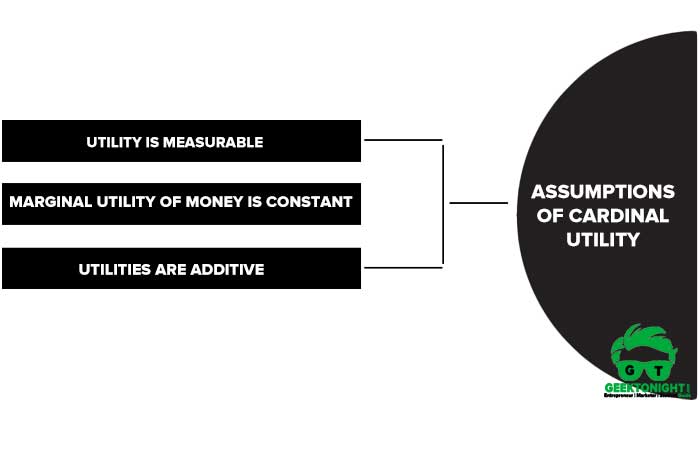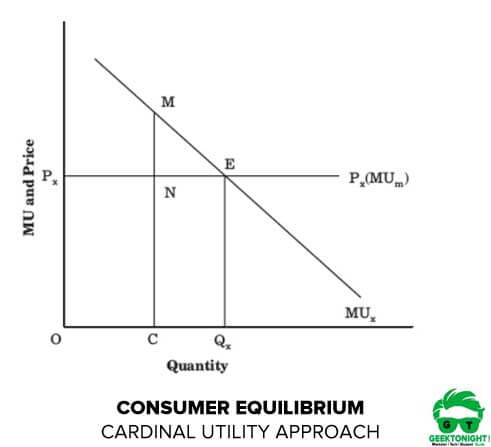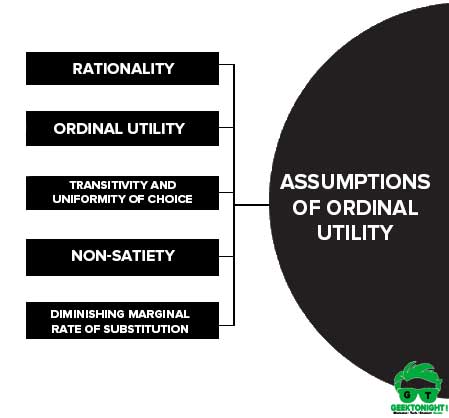What is Cardinal Utility?
Cardinal Utility explains that the satisfaction level after consuming a good or service can be scaled in terms of countable numbers.
The cardinal utility theory or approach was proposed by classical economists, Gossen (Germany), William Stanley Jevons (England), Leon Walras (France), and Karl Menger (Austria).
Later on a neo-classical economist, Alfred Marshall brought about significant refinement in the cardinal utility theory. Therefore, cardinal utility theory is also known as neo-classical utility theory.
Table of Content [Show]
Neo-classical economists believed that utility is cardinal or quantitative like other mathematical variables, such as height, weight, velocity, air pressure, and temperature. They developed a unit of measuring utility called utils.
For example, according to the cardinal utility concept, an individual gains 20 utils from a pizza and 10 utils from coffee. In the measurement of utility, neo-classicists assumed that one util equals one unit of money and the utility of money remains constant.
On the indifference curve (IC), there can be several other points in between the points a, b, c, d, and e, which would yield the same level of satisfaction to the consumer. Therefore, the consumer remains indifferent towards any combinations of two substitutes yielding the same level of satisfaction.
Also Read: Production Possibility Curve
Assumptions of Cardinal Utility
The assumptions of the cardinal utility approach are as follows:

Utility is measurable
The basic assumption of the cardinal utility approach is that utilities of commodities can be quantified. According to Marshall, money is used to measure the utilities of commodities. This implies that the amount of money that a customer is willing to pay for a particular commodity is a measure of its utility.
Marginal utility of money is constant
The cardinal utility approach assumes that money must measure the same amount of utility under all circumstances. To put simply, the utility derived from each unit of money remains constant.
Utilities are additive
As per this assumption, the utility derived from various commodities consumed by an individual can be added together to derive the total utility. Suppose an individual consumes X1, X2, X3,….Xn units of commodity X and derives U1, U2, U3,….Un until respectively, the total utility that the individual derives from n units of the commodity can be expressed as follows:
Un = U1(X1) + U2(X2) + … + Un (Xn)
- Diminishing marginal utility: The marginal utility of a commodity diminishes as an individual consumes successive units of a commodity. This can be expressed as follows: MUX = f(Qx)
Where MUX is the marginal utility of commodity X, f is a function, and Qx is the quantity of the commodity consumed. - Rationality: Consumers are rational beings and aim to maximize their utility at the given income level and market price.
According to the cardinal utility approach, a consumer reaches his/ her equilibrium when the last unit of his/her money spent on each unit of the commodity yield the same utility. Therefore, the consumer would spend his/her money income on commodity X so long as:
MUx > Px (MUm)
Where Px is the price of the commodity, MUx is the marginal utility of the commodity and MUm is the marginal utility of money.
A utility maximising consumer reaches the equilibrium when:
MUx = Px (MUm) or = 1
This equilibrium condition derives the consumer demand curve for commodity X, which is shown in Figure.

The line parallel to the X-axis, Px (MUm) depicts the constant utility of money weighed by the price of commodity X. MUx curve represents the diminishing marginal utility of commodity X. Both the lines intersect at point E, which means the consumer reaches equilibrium at point E.
Also Read: Long Run Cost
What is Ordinal Utility?
Ordinal Utility explains that the satisfaction after consuming a good or service cannot be scaled in numbers, however, these things can be arranged in the order of preference.
In the 1930s, two English economists, John Hicks and R.J. Allen argued that the theory of consumer behaviour should be developed on the basis of ordinal utility.
According to the ordinal theory, utility is a psychological phenomenon like happiness, satisfaction, etc. It is highly subjective in nature and varies across individuals. Therefore, it cannot be measured in quantifiable terms.
As per the ordinal utility approach, utility can be measured in relative terms such as less than and greater than. The approach advocates that consumer behaviour can be explained in terms of preferences or rankings.
For example, a consumer may prefer ice-cream over soft drink. In such a case, ice-cream would have 1st rank, while 2nd rank would be given to soft drink.
Therefore, as per the ordinal utility approach, a consumer identifies several pairs of two commodities which would provide him/her the same level of satisfaction. Among these pairs, he/she may prefer one commodity over the other based on how he/she ranks them in order of utility.
This implies that utility can be ranked qualitatively and not quantitatively. To better understand the ordinal utility approach, there are certain concepts that need to be discussed.
- Go to Concept
Also Read: What is Demand Forecasting?
Assumptions of Ordinal Utility
The ordinal utility approach is based on certain assumptions, which are as follows:
- Rationality
- Ordinal utility
- Transitivity and uniformity of choice
- Non-satiety
- Diminishing marginal rate of substitution

Rationality
Consumers are rational beings and aim to maximise their utility at the given income level and market price of commodities that they consume.
Ordinal utility
Utility cannot be measured in quantitative terms but in qualitative terms. This is because a consumer expresses his/ her preference for a commodity out of a collection of similar goods.
Transitivity and uniformity of choice
It is assumed that a consumer’s choice is always transitive. This implies that if a consumer prefers A to B and B to C, the consumer would prefer A to C as well. On the other hand, if the consumer considers A=B and B=C, he must consider A=C. On the other hand, uniformity of choice implies that if a consumer prefers A to B at one time period, he/ she does not prefer B to A in another time period or even does not consider A and B as equal.
Non-satiety
The theory also assumes that a consumer is never oversupplied with commodities. This means that a consumer does not reach a state of saturation in case of any commodity. Thus, a consumer tends to prefer larger quantities of a commodity over smaller.
Diminishing marginal rate of substitution
The marginal rate of substitution refers to the rate at which a consumer is willing to substitute one good (X) for another good (Y) in order to maintain the level of satisfaction. The marginal rate of substitution is represented as dY/dX.
According to the ordinal utility approach, the marginal rate of substitution goes on decreasing when a consumer continues to substitute X for Y. The marginal rate of substitution has been discussed in the later sections of the chapter.
Leave a Reply